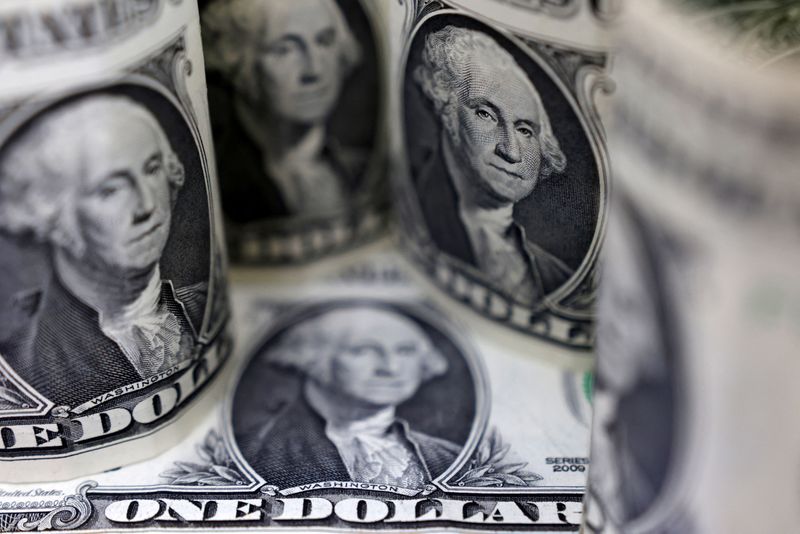By Sarupya Ganguly
BENGALURU (Reuters) - U.S. Treasury yields will trade around current levels over the coming six months before falling later in the year, according to bond strategists polled by Reuters, suggesting markets were fully priced in for Federal Reserve interest rate cuts.
Since peaking at 5.02% in October, the benchmark U.S. 10-year Treasury note yield fell over 120 basis points and finished 2023 roughly where it started.
Bond bulls drove the yield, which moves inversely to prices, lower by front-loading pricing of about 150 bps of interest rate cuts this year following a perceived-dovish Fed pivot and slowing inflation.
It has since recovered to about 4.00%, gaining over 20 bps from a late December-low of 3.78% as incoming economic data showed the world's largest economy was still growing at a healthy pace and didn't need immediate rate cuts.
Interest rate futures are now pricing in about a two-thirds chance of the first rate cut in March, down from near-90% just two weeks ago. The Fed's own dot plot projections showed 75 bps of rate cuts this year.
This recovery in yields is set to hold ground, with the yield on the 10-year note forecast to rise about 10 bps to 4.10% in three months, the Jan. 5-10 Reuters poll of 62 bond strategists found; a 15 bps downgrade from a December poll.
"Our forecast is for yields to remain unchanged for the first three months; and while that may sound really boring, that's how bonds work," said Steven Major, global head of fixed income research at HSBC.
"I feel very strongly the next big move in yields is downwards and will come in the second half of the year because markets need to see actual moves from the central bank rather than working on pure expectations," Major added, albeit making allowance for some interim volatility.
The benchmark 10-year yield was expected to fall to 3.93% by end-June and then to 3.75% by end-year, the poll found. A smaller sample of the U.S. primary dealer banks had higher forecasts of 4.00% and 3.88%, respectively.
"We have a bimodal outlook. One is a typical late-cycle recession and the other is rate cuts boosting productivity and leading to stronger economic growth," said Guy LeBas, chief fixed income strategist at Janney Montgomery Scott.
"A naive midpoint of those two scenarios could see the 10-year yield rise to about 4.70% by the end of 2024," he added - the highest end-year forecast in the survey.
The interest rate sensitive 2-year Treasury note yield, currently about 4.35%, was expected to hold steady in the coming three months, before falling to 4.00% by end-June and a further 50 bps to 3.50% by the end of the year.
If realised, the negative spread between yields of 2-year and 10-year Treasury notes - usually a foreteller of impending recession - will completely lose its inversion and have a 25 bps positive gap by end-2024.

"As an indicator that was not helpful in forecasting recession last year, it's likely to not be helpful this year either," said Torsten Slok, chief economist at Apollo Global Management (NYSE:APO).
"The incoming supply of Treasuries will put considerable upward pressure on long rates for reasons that have nothing to do with whether we have a recession or not," he added, stating factors such as the U.S. budget deficit and the risk of a resurgence in inflation could keep yields elevated.